Pittossporum undulatum is a fast growing evergreen tree, called by it's various common names Native Laurel, Native Daphne, Mock Orange and Sweet Pittosporum. This plant is native to Australia and it's natural habitat is in Rainforests and wet sclerophyll forests ( forests with higher rainfall ). Birds eat the berries, and deposit them where they travel, and this leads to the plants growing in areas that it is not neccessarily welcome. Other species of Pittosporum are not considered weeds and are popular garden plants.
This native Pittosporum is an attractive plant, with shiny glossy green leaves and has masses of small creamy- white flowers with a wonderful fragrance. The scent of the flowers is a delight while walking amongst stands of the tree in parks and reserves, so in my opinion, this is a plant which maybe attracts undeserving criticism, and there are many other introduced weeds that present far more of a threat to native bushland.
Native Laurel is happy growing in semi-shade under taller trees as well as out in the open sun by itself or as part of a mixed planting. it flowers in Spring and early summer, and is drought tolerant once established, but does benefit from an extra watering. Left unpruned, it can grow to around 10 to 12 metres tall, so if you have a large garden , it could be considered, or maybe you will get some plants growing, courtesy of local birds if you live in Australia.
I took these photos in a local Reserve where i regularly take a walk.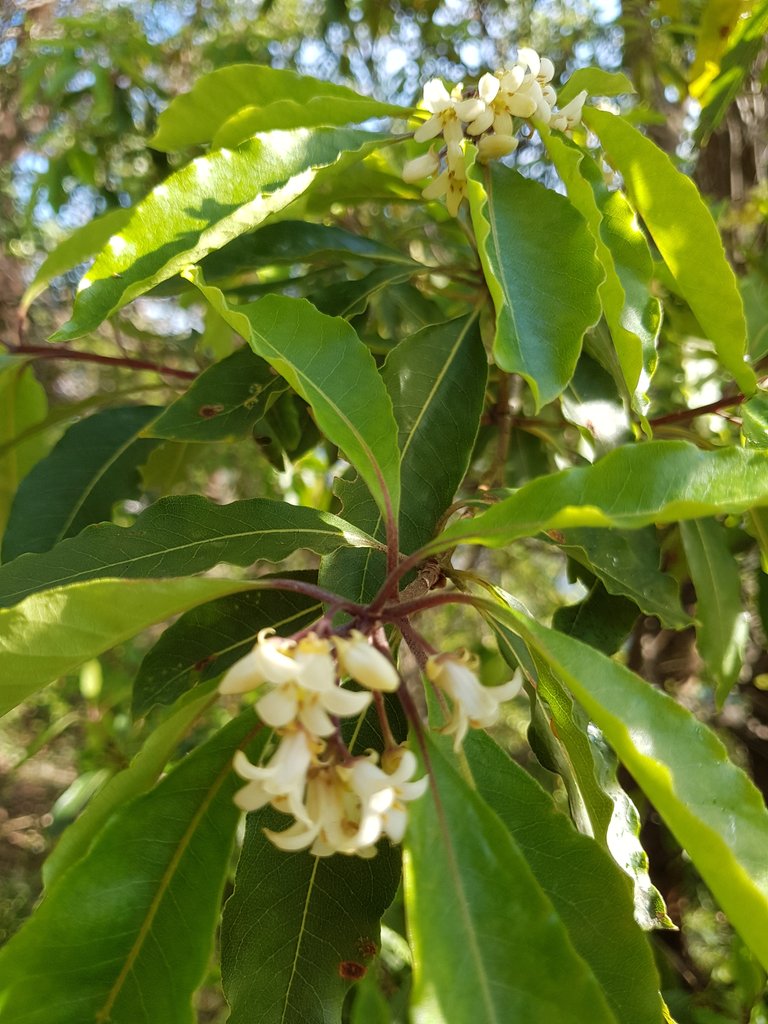
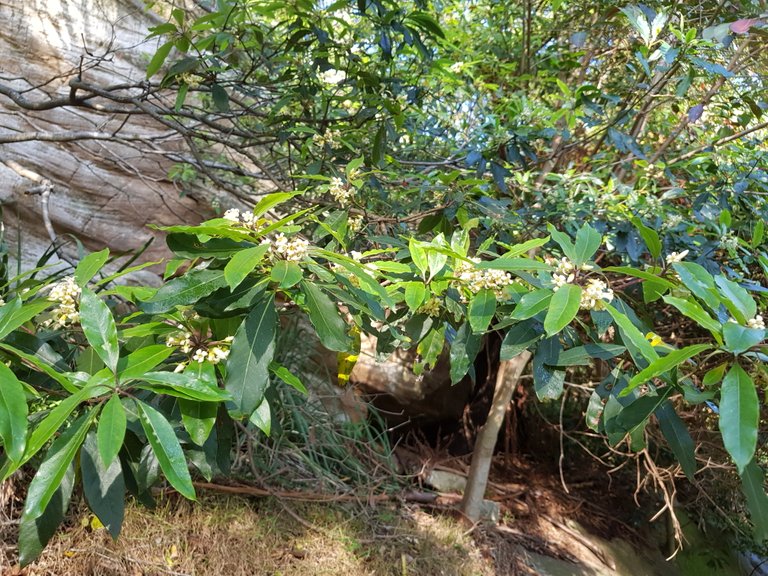
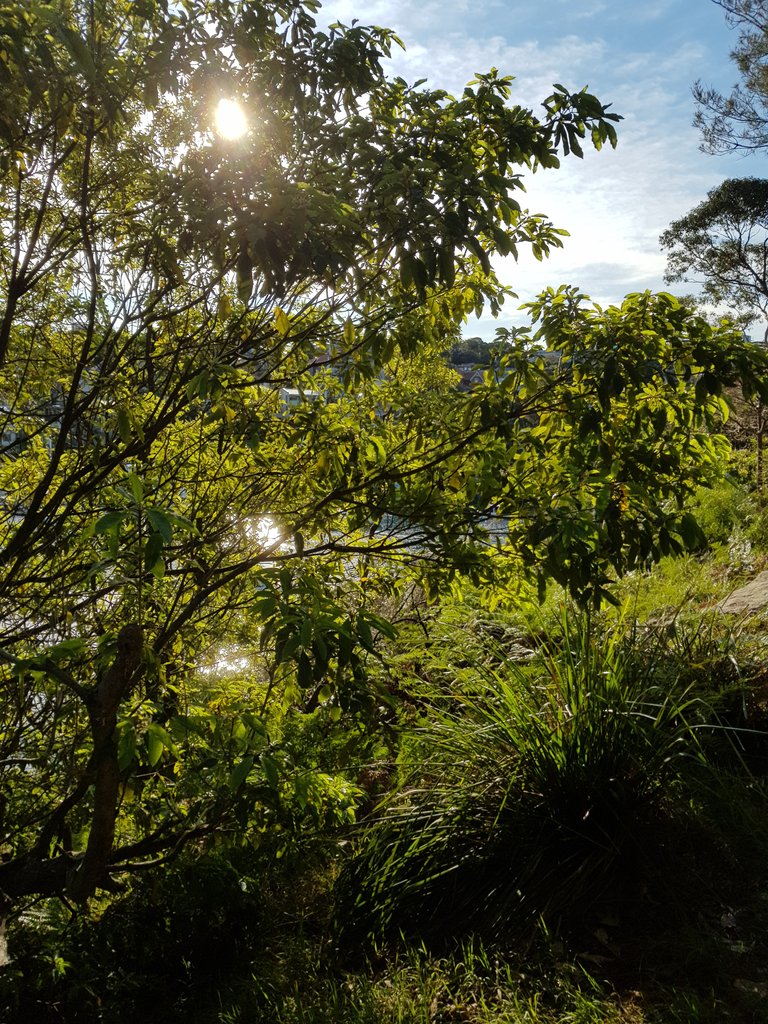
Pittosporum undulatum is a tree to 12 metres in its natural habitat but usually smaller in cultivation. It provides dense shade and spreads up to 7 metres across. It has coarse grey bark and glossy green elliptical leaves some 6-15 cm long and 1.5-4 cm wide with distinctive wavy, or undulating margins. The leaves are about 75 mm long with toothed margins. Small, white, fragrant flowers occur in terminal clusters in spring and early summer and are followed by orange-tan berries 1 cm in diameter in autumn, which persist for several months.
The species is well established in cultivation in Australia and some other warm regions around the world such as California. It is a hardy and adaptable plant which appreciates most acidic soils and extra moisture, yet can also withstand extended dry periods once established. It can be clipped into hedges and is quick growing, as well as having pleasantly perfumed flowers which can pervade a large area (hence the common name 'native daphne').
http://anpsa.org.au/p-und.html
Fav. comment Award ! Great Pics and information.
Pittosporum undulatum, known as Sweet Pittosporum or simply Pittosporum, is a small tree native to certain moist forests and woodlands on fertile soils on the coast and nearby ranges in southeastern Australia. Its natural range extends from southern Queensland to eastern Victoria. At the western end of its range it was recorded “in rocky places about Western Port” by Mueller in 1860. In recent years, concern about its spread particularly in Victoria has seen it branded nationally as an “environmental weed”. In Sydney however, calling it a weed puts at risk scarce remnants of vegetation where it is native.
Around Sydney, Pittosporum undulatum occurs naturally in widespread sandstone gully habitats, and in the understorey of two rare vegetation types, Blue Gum High Forest (BGHF) and Sydney Turpentine Ironbark Forest (STIF). Each type of forest has been reduced to about 1% of its former extent, much of which persists as small patches on edges of privately-owned farmland. Each forest type has been gazetted an Endangered Ecological Community (EEC) under the NSW Threatened
Species Conservation Act 1995. Compare the maps of Sydney’s Natural vegetation 1788 and 1990 – almost all the aqua blue and khaki green indicating these EECs in eastern Sydney has disappeared
Pittosporum undulatum has been branded an “environmental weed” and literature with this message distributed nationally. The ESA Bulletin of December 2000 contained a thesis summary entitled “The ecology of Pittosporum undulatum …. an environmental weed in southeast Australia”. The message members of the general public receive from the term “environmental weed” is that Pittosporum’s a weed that’s bad for the environment, and should be eliminated! If they see it growing, even in scarce remnants of its native habitat, they may bulldoze the whole understorey and all its associated biodiversity. This is what happened to convert forest
References1234
Silly Sausage Award ! Well done on your choice of Pics and information.
Thank you so much!
@ctrl-alt-nwo,
Is that the harbor walking path? It seems like a little forest! Never heard about this plant before! Honestly I don't want to plant it at my garden! But I like the description that you shared with us!
Cheers~
Yes it's the same path again. There's something different every time i go there.
I never seen Laurel shrub before but its leaves we use for a dish called Adobo and Menudo @ctrl-alt-nwo and it does makes the dishes fragrant.
Yeah, i like Adobo, had it a number of times when i was in Phil.
Excellent messages and regular information about the plants.
The Pittosporaceae family includes woody plants originating from Oceania, East Asia and tropical Africa, very similar to the Saxifragaceae, but different from them mainly due to the presence in the cortex of the resin channels and the corolla structure, which can be gamopetala. Flowers are usually attinomorphic, hermaphroditic, with perianth, usually consisting of 5 more or less grown sepals and as many petals, sometimes welded, androceo pentamero, gyneceo of 2 fruits forming ovario-supero. The flower formula is usually as follows:
A fruit is a capsule or lizard of a polysperm (Ribes).
The most famous species is Pittosporum tobira, a shrub with leather leaves, evergreen, brilliant and fragrant flowers, widely used for hedges and borders in gardens, especially in coastal areas with a mild climate.
http://www.dipbot.unict.it/sistematica/Pitt_fam.html
Pittosporum undulatum (Victorian Box) - A large shrub or medium sized tree that can reach to 30-40 feet tall or more with a pyramidal shape but is most often seen maintained as a much lower screen or hedge plant. Attractive dark green leaves have very wavy margins and the fragrant cream-white flowers bloom in profusion in the early spring. Following bloom, small orange berries are produced, which can be a nuisance but also attract birds. Plant in sun or part shade and give deep and infrequent watering – older plants are quite drought tolerant. Established plants hardy to at least 18° F. This is an extremely useful plant as a large attractive hedge and windbreak. We have been told that warblers and mockingbirds are attracted to the fruit and Anna's Hummingbirds to the nectar of the flowers.
Source: https://www.smgrowers.com/products/plants/plantdisplay.asp?plant_id=1291
These are amazing weeds growing up ti12 meters as high as tree storey buildings!
If the leaves or flowers could be used in cooking or salad, this would become very useful and popular in my country!
Posted using Partiko iOS
they look excellent beautiful shots you shared and great to know in depth about it :)
Pittosporum undulatum (Victorian box) is a shrub/tree (family Pittosporaceae) with white flowers and narrow wavy leaves found in the San Francisco Bay area, Channel Islands and coastal ranges of California. It is native to southeastern Australia. It favors forests, woodlands, grasslands, and scrub and chaparral habitat. It spreads via seeds and roots. The sticky seeds are dispersed by birds and mammals.
https://www.cal-ipc.org/plants/profile/pittosporum-undulatum-profile/
Great plant. Looks very beautiful !!! If all the weeds were so beautiful, we would have nothing to compare. In order for there to be beauty, there must be ordinary things, otherwise there simply won't be anything to compare with.
Yes, very true.
Thanks again for sharing.
It is always my pleasure to share your content on twitter for my followers to see and read.
Shared on twitter promoting good quality content on #Steemit.
Stephen
#Promo-Steem #steemtalent #JoinSteemit #Steemit
Native Laurel, if only all weeds were this good. #STEEM #steemtalent #JoinSteemit #Steemit @Steemit
#Photographer #Blogging #Blogger #Photography #Gardening #GardenersWorld #Garden #Plants #Australia
The Victorian box (Pittosporum undulatum), also sometimes called mock orange, is a quickly growing landscape tree that can be used as a hedge, screen or street tree. Its fast growth rate means it establishes easily, and because it is a tolerant plant, it can be grown in a variety of urban and rural settings. Its large size, however, means it needs considerable space in which to mature, and it can be invasive.
https://homeguides.sfgate.com/growth-rate-pittosporum-undulatum-77591.html
If this plant grows quickly and is a good honey plant, it is a godsend for beekeepers. In Ukraine and Moldova, beekeepers sow fields with honey herbs specifically for collecting honey. If a plantation is planted with this weed plant, honey harvest is ensured every year. We plant different types of acacia in this way. Interestingly, the leaves of this plant are similar to the leaves of peach and almond, are they relatives?
In our midst you shared a very beautiful flower and your photography was awesome. I liked your first picture, thank you for sharing new photography among us.
What a great photos was fun reading your post
It's great that you enjoyed it !
Nice tree, I never heard about it. Thanks for sharing :-)
A weed that is 12m tall? Man you live at some different world :-) here in Europe even trees does not reach this height.
Delightful looking little tree to me. We have Mountain Laurel, broad leaf evergreen, here in the Northeast USA that grows under the deciduous forests. It is a bit similar in appearance.

@ctrl-alt-nwo, First of all i want to appreciate your work because you've explained really well about this Plant and great to know that this plant is Fast Growing one and whenever we see the effective growth of any plant then that gives the great essence specially when we grow that particular plant.
And main aspect of nature and nature's components is attraction and these aspects can attract us and heal us. And i strongly believe that if we are not having good mood or like that, then in my opinion it's best choice to go in nature to explore the natural beauty and for sure natural beauty can convert our mood and can give pleasant essence.
And last not the least, i want to talk about the Fragrance of flowers, and in your words i can feel that these flowers are holding amazing fragrance and whenever we see beautiful flowers with awesome fragrance then for sure it inspire us to walk close to these flowers because Fragrance is also an healing aspect.
Wishing you an great day and stay blessed. 🙂
The surroundings look gorgeous. It looks like a lovely place to take a walk there.
It's a tree that has white flowers and small round fruits that are very favored by birds. what you say is true, the fruit eaten by birds and thrown away. This tree will grow even if it has a slightly dry soil. I like the last photo of you, the sun looks very beautiful there with sparkling light.
Native to southeastern Australia, P. undulatum was widely introduced in the late 1800s as an ornamental tree, and it has now proven invasive in tropical, sub-tropical and warm temperate areas, especially on islands. It produces large numbers of fruits and its seeds are eaten by a wide range of frugivorous birds. It is a great colonizer of open, disturbed habitats, as well as being very shade tolerant. It is very competitive, shading out other vegetation, first invading relatively open forest and forming a dense understorey. It is especially threatening in sensitive island montane forests such as those found in the Azores, but also the Pacific islands, the South African fynbos, and even eucalyptus forests in Australia where it is considered a threat to the survival of native forests. It supports a dense soil seed bank and dense seedling recruitment and it also has a good capacity to resprout after cutting.


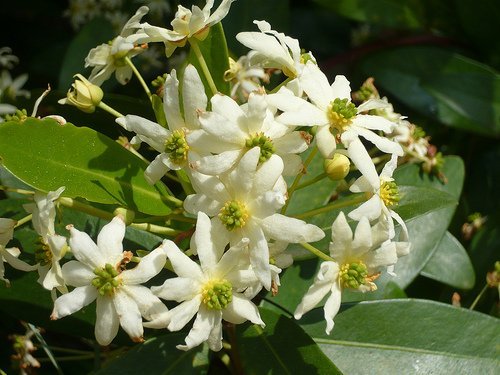
image source
Pittosporum undulatum is a well-defined species in the family Pittosporaceae; sub-family Pittosporeae, series Bivalvae, and is probably the most widely cultivated Pittosporum species (Cooper, 1956). There are 150-200 species of Pittosporum native to a broad area from the Canary Islands to Pacific islands via tropical Africa and the Himalayas to Japan, though most are native to Australasia where there are thought to be about 50 species (Goodland and Healey, 1996). P. undulatum hybridises naturally in its Australian native range, occasionally with Pittosporum bicolor in Victoria, and possibly also with Pittosporum revolutum further north (Cooper, 1956). There are other species within the genus that are noted as naturalizing or invasive, or potentially so, including Pittosporum pentandrum and Pittosporum viridiflorum in the Pacific (PIER, 2008), and Pittosporum tobira and Pittosporum tenuifolium in the Caribbean (Kairo et al., 2003). These species may also be possibly invasive elsewhere.
image sources
Pittosporum, from Greek, means "pitch-seed", referring to the resinous coating on the seeds. The species name undulatum is derived from the Latin unda, a wave or surge, referring to the characteristic wavy edges of the leaves.
content source
I find this so interesting. Great work..and thanks for your support
Thanks ! Things are getting interesting in the markets too...
And thank you...and they are to get more interesting..
Very beautiful plant ! I've never seen anything like it .
Thank you very much for your new knowledge and beautiful
photos by @ctrl-alt-nwo
This species has so many interesting names )
And the aroma of it as you write is simply amazing.
Really wanted to smell.
And these flowers look impressive )
source
Native to southeastern Australia, P. undulatum was widely introduced in the late 1800s as an ornamental tree, and it has now proven invasive in tropical, sub-tropical and warm temperate areas, especially on islands. It produces large numbers of fruits and its seeds are eaten by a wide range of frugivorous birds. It is a great colonizer of open, disturbed habitats, as well as being very shade tolerant. It is very competitive, shading out other vegetation, first invading relatively open forest and forming a dense understorey. It is especially threatening in sensitive island montane forests such as those found in the Azores, but also the Pacific islands, the South African fynbos, and even eucalyptus forests in Australia where it is considered a threat to the survival of native forests. It supports a dense soil seed bank and dense seedling recruitment and it also has a good capacity to resprout after cutting.

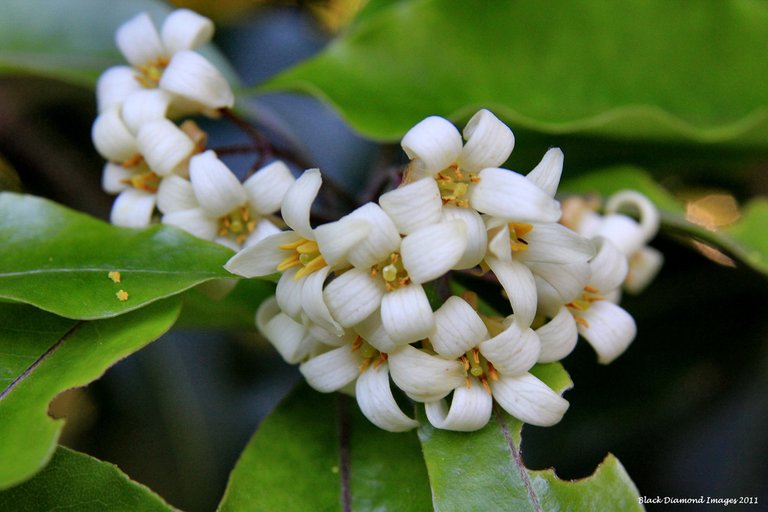
P. undulatum can reach 30 m high, though often to 12 m and with a straight trunk and regular branch arrangement in favourable situations, but in dry exposed locations it is a shrub up to 2-3 m. Large trees may have a broad canopy up to 7 m across. Bark is coarse and grey.
The leaves are about 75 mm long with toothed margins. Small, white, fragrant flowers occur in terminal clusters in spring and early summer and are followed by orange-tan berries 1 cm in diameter in autumn, which persist for several months
Leaves alternate, elliptic-oblong to oblanceolate, acuminate at apex, attenuate at base, entire, 6-16 cm long, glossy green above, paler beneath, membranous, margins undulate or flat, sometimes recurved; main vein sunken or raised adaxially, raised abaxially, secondary nerves about 12 per side, distinct; petioles 7-26 mm long, 1-2 mm wide. Inflorescences terminal, 4-15 flowered, subumbelliform; peduncles and pedicels 1.9-3.1 cm long, accresecent in fruit, tomentose; peduncles subtended by a whorl of leaves and numerous caducous, brown-tomentose, ciliolate bud scales 1 - 2 mm long; sepals frequently connate in a tube which splits into 2 parts, one 1 - 2-lobed, the other 3- to 4- lobed, lanceolate, acuminate 6.5-10.5 mm long 1.2-2.5 mm broad, tomentoluse, falling before the petals; petals, linear-lanceolate, to linear-oblong, obtuse, 11-17 mm long, 3-4 mm broad, coherent at the base, spreading to recurved above, creamy-white; stamens 5-11 mm long, sometimes reduced to sterile rudiments 0.5-1.0 mm long; anthers lanceolate-oblong to sagittiform, 2.5-5.0 mm long, 1.0-1.5 mm broad. Pistils at anthesis slightly shorter or longer than the stamens; ovary 4-6 mm long, 1.8-4.0 mm broad, tomentulose; style 2.0-4.5 mm long; stigma capitate and obscurely 2- to 4-lobed or almost truncate. Capsules sub-globose, 2-valved, 10-14 mm in diameter, yellow to brown, smooth to slightly rugose, glabrous; valves convex in transverse section, less than 1 mm thick, coriaceous, with placenta thickened at the base and bearing 2-3 rows of short stout peg-like funicles from the base to just above the middle; seeds 12-22 (-35), about 3 mm long, orangy red to dark red to black, irregular (from Cooper (1956) in Goodland and Healey, 1996).
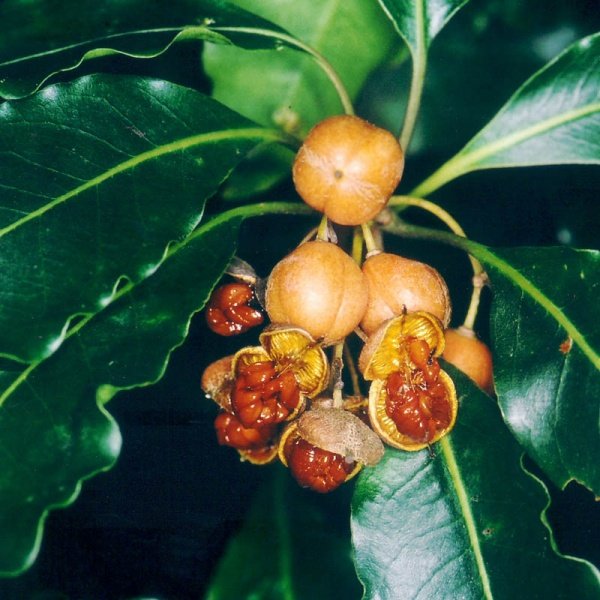
sorce:
https://www.cabi.org/isc/datasheet/45705
Places exist of this plant in the world:
Pittosporum undulatum (Victorian Box) - A large shrub or medium sized tree that can reach to 30-40 feet tall or more with a pyramidal shape but is most often seen maintained as a much lower screen or hedge plant.
Attractive dark green leaves have very wavy margins and the fragrant cream-white flowers bloom in profusion in the early spring. Following bloom, small orange berries are produced, which can be a nuisance but also attract birds. Plant in sun or part shade and give deep and infrequent watering – older plants are quite drought tolerant. Established plants hardy to at least 18° F.
This is an extremely useful plant as a large attractive hedge and windbreak. We have been told that warblers and mockingbirds are attracted to the fruit and Anna's Hummingbirds to the nectar of the flowers. We have some of the largest trees in Santa Barbara in our nursery back parking lot (over 50 feet tall) - if you haven't seen this common hedge plant as a large tree take a look at these big specimens – even some Australians have been amazed! This plant, native to subtropical rainforests and an understory plant in Eucalyptus forests in New South Wales Australia, is considered by some to be invasive into riparian habitats in California and those that have it in their gardens know it does occasionally reseed in gardens.
source
magoo-2 found a series of multi accounts of a same owner is following your articles to cheat your generous rewards.
magoo-2 found these accounts are suspicious & can be multi accounts of a single owner. Conclusion is based on last 30 days transactions:
@alves
@devid1996
@mhyeasin
@sadikulaziz
@msena
@kilee
@ripon1
@googlefighter
@melianasagita
@ashasikder
@hichako
magoo-2
Check our latest multi comment spam update report
Pittosporum undulatum
Description
Victorian box is a large shrub or medium sized tree that grows 30-40 ft. tall and wide, but is often maintained as a lower screen or hedge plant. It has dark green leaves, cream-white flowers and small orange berries, which can be a nuisance but also attract birds. Native to the subtropical rainforests and is an understory plant in Eucalyptus forests in New South Whales, Australia.
It is considered by some to be invasive in riparian habitats in the San Francisco Bay area and the south coast of California. It occasionally reseeds in gardens. The Calflora map shows its current distribution in California outside of horticulture.
https://plantright.org/watch/pittosporum-undulatum/
The sweet pittosporum is generally a hairless tree, except for a light pubescence on the new twigs and flower stalks. It grows 6-8 m tall, but can exceptionally reach 15 m. It has a dark greyish bark covered in scales that on young branches become deep green with scattered white spots. It may sometimes be confused with the laurel Laurus novocanariensis, but it can be easily differentiated by the entire margin of the leaves and their wavy blades, as well as the resinous scent that they give off when rubbed. The leaves are simple, persistent, somewhat leathery and shiny. They are alternate and sometimes grouped in a spiral at the ends of the branches. The blade is ovate-lanceolate or elliptical and up to 15 cm long.
The flowers are borne in compact clusters and give off an intense fragrance similar to orange blossom. They have 5 yellowish-white petals. These are quite thick and partially joined towards the base, forming a tube where nectar accumulates. The fruits are globose, orange capsules. When ripe the two leathery sides, or valves, open exposing very striking seeds covered in a reddish or blackish seed coat (aril). These are very sticky as they are immersed in a viscous-resinous substance that favours their dispersal.
source
This is really amazing flower of Native Laurel . it is very beautiful. so great photography. thanks @ctrl-alt-nwo
Have a great day.
magoo-2 found a series of multi accounts of a same owner is following your articles to cheat your generous rewards.
magoo-2 found these accounts are suspicious & can be multi accounts of a single owner. Conclusion is based on last 30 days transactions:
@goldcoin
@scanbot
@stmit
@shavishtha
@minoservice
@yobot
magoo-2
Check our latest multi comment spam update report
Pittosporum undulatum is a tree growing to 15 m tall with wavy (undulating) leaf edges. It carries conspicuous orange woody fruits about 1 cm in diameter for several months after flowering in spring or early summer.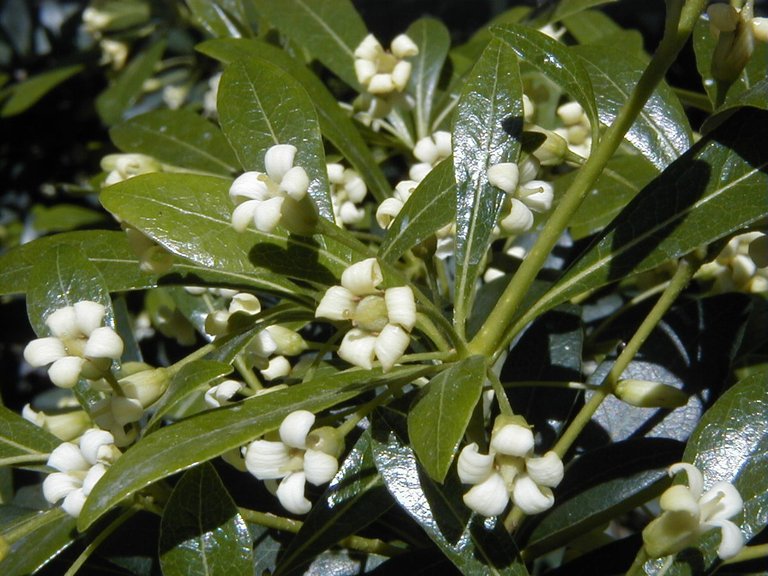 ![1200px-Pittosporum_heterophyllum.jpg]
![1200px-Pittosporum_heterophyllum.jpg]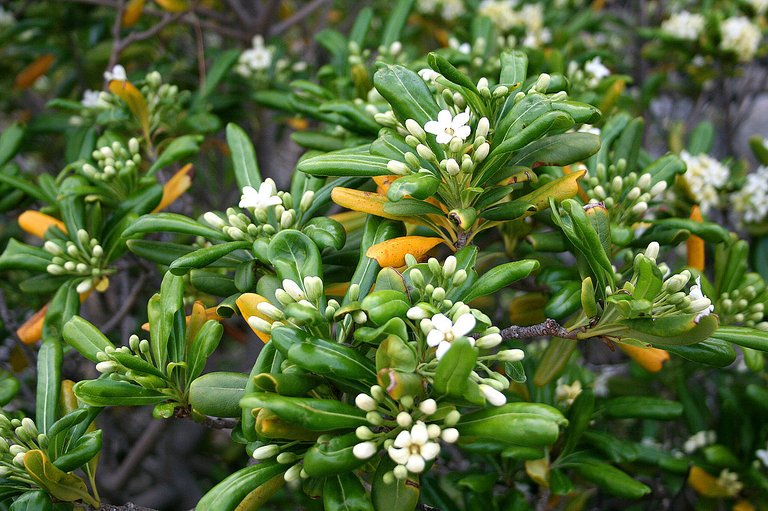
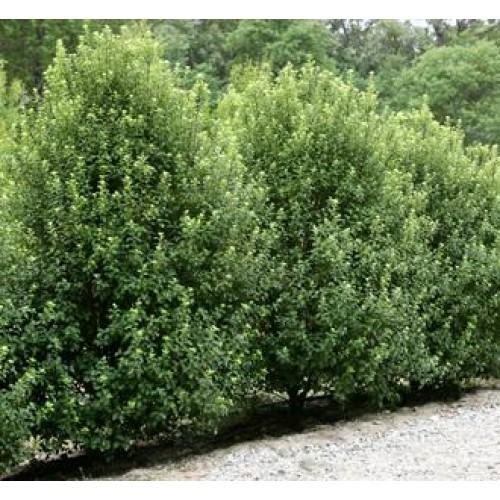
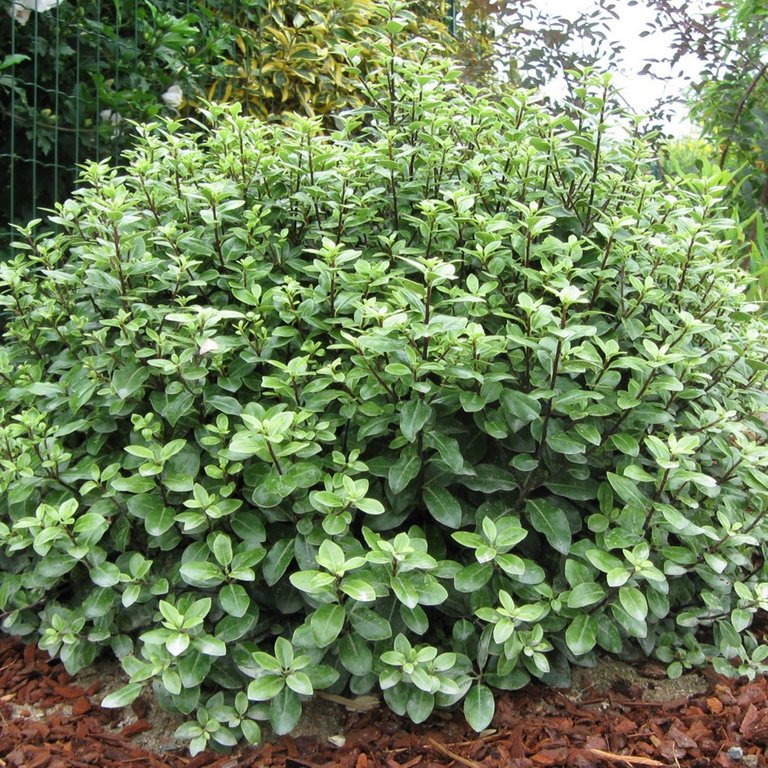
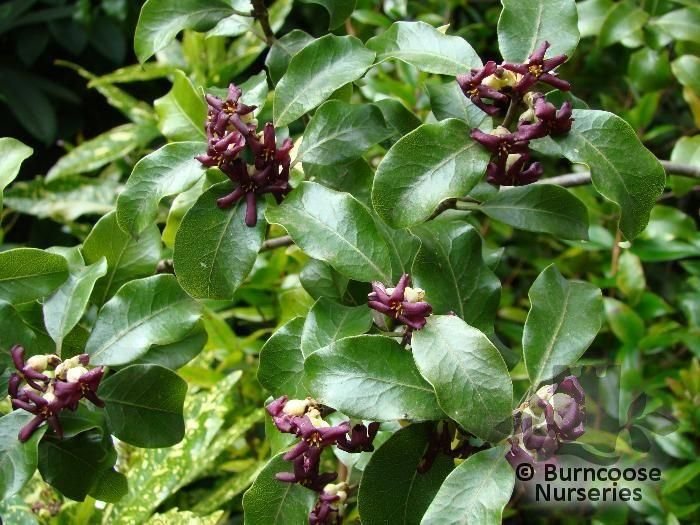
Originally Pittosporum undulatum grew in moist areas on the Australian east coast, where its natural range was from south-east Queensland to eastern Victoria,[4] but has increased its range since European settlement.
The earliest known record (according to the Australian Virtual Herbarium) is from Port Jackson, Sydney, in 1803.[4] However, P. undulatum's status around the Sydney area is contentious.[5] Even though it is native to the region, P. undulatum has spread to soils and bushland where it wasn't found before European settlement, often out-competing other plants.Pittosporum has done especially well in areas where the environment has been altered by humans.
Habitat fragmentation weakening other natives, by fertilizer runoff from homes increasing soil nutrients and by the suppression of bushfires near suburbs. Unlike most natives, P. undulatum takes advantage of high nutrient levels and its seeds can germinate without needing fire. This has led to the species sometimes receiving the "invasive" label although some[who?] think that it is merely returning to areas where it grew before people arrived in Australia and began burning the environment far beyond that which previously occurred.
[https://en.m.wikipedia.org/wiki/Pittosporum_undulatum]
Also known as the Tasmanian Laurel, Anopterus glandulosus is one of the only species that originate in Tasmania that has been successfully cultivated.
As you would expect of a plant that originates in Tasmania it can only be grown a cool humid climates of Tasmania and south eastern Australia. For those living in these areas this plant can make an attractive addition the garden whether planted directly into the ground in a large container.
It is a very attractive medium sized upright evergreen shrub growing to about 2.5m tall.
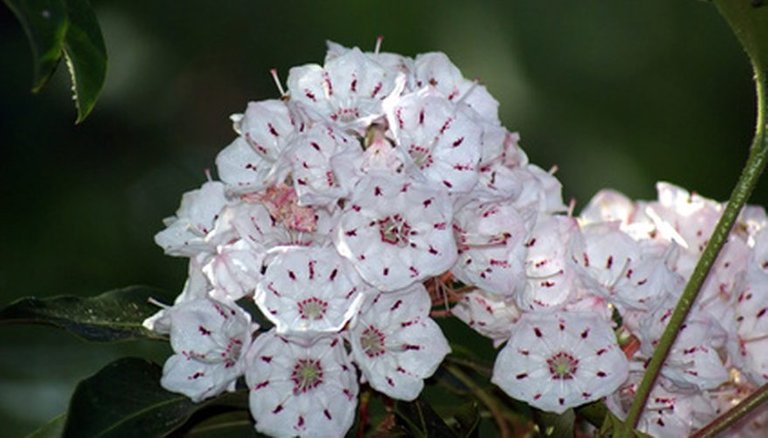
The large glossy, dark green leaves tend to cluster towards the end to the branches giving the shrub and very dense and full appearance. In late spring the delicate white flowers appear at the branch tips.
The leaves of the Tasmanian Laurel are very large, leathery, spathulate in shape with a shallow toothed margin and they can be as long as 17cm and as wide as 4cm.
The new growth is a wonderful deep red to bronze colour and adds colour to the shrub in spring.
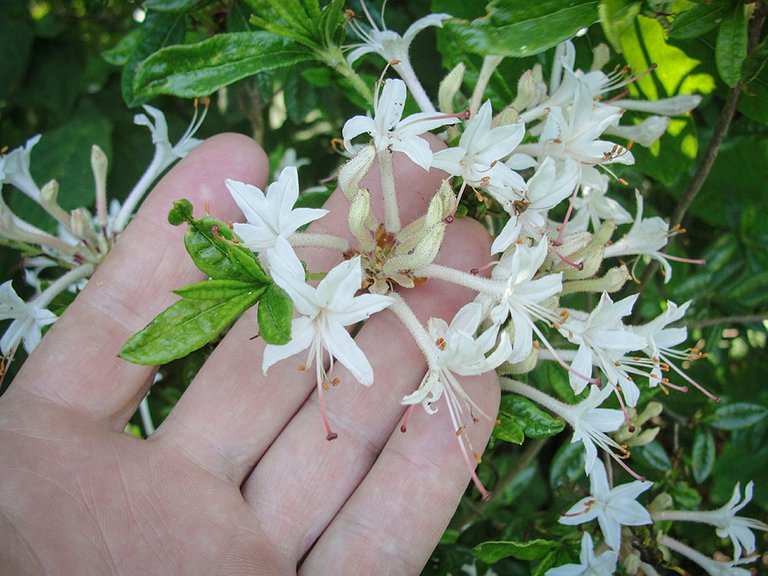
The flowers are cup shaped and are arranged in terminal racemes, they can be white or slightly pink.
Soil: They require moist, humus rich, lime-free soil.
Maintenance: The Tasmanian Laurel is relatively easy to grow when planted it in a sheltered place in semi-shade.
Water and fertilise regularly during summer and in spring spread mulch and compost on soil for additional nutrition.
As a slow growing plant, prune only to maintain shape.
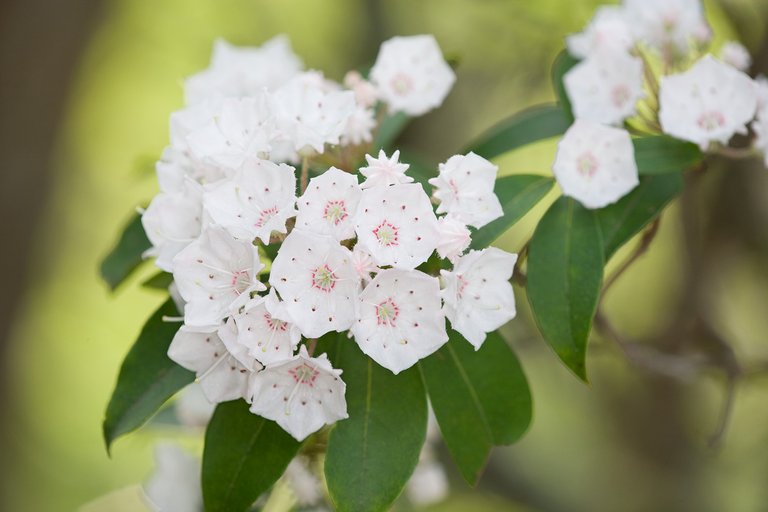
https://www.gardensonline.com.au/GardenShed/PlantFinder/Show_3209.aspx
magoo-2 found a series of multi accounts of a same owner is following your articles to cheat your generous rewards.
magoo-2 found these accounts are suspicious & can be multi accounts of a single owner. Conclusion is based on last 30 days transactions:
@moniristi
@shishiristi
@aflatunnisa
@hafez
@shihabieee
@mrashik
magoo-2
Check our latest multi comment spam update report
Very attractive plant . Creamy flowers and green leaves combination is very beautiful . Suited for all places . Thanks for the blog
magoo-2 found a series of multi accounts of a same owner is following your articles to cheat your generous rewards.
magoo-2 found these accounts are suspicious & can be multi accounts of a single owner. Conclusion is based on last 30 days transactions:
@pardeepkumar
@sami100
magoo-2
Check our latest multi comment spam update report
Plants like this usually grow wild in the forest, but because the beautiful and fragrant flowers can be considered as ornamental plants...
Thanks @ctrl-alt-nwo
magoo-2 found a series of multi accounts of a same owner is following your articles to cheat your generous rewards.
magoo-2 found these accounts are suspicious & can be multi accounts of a single owner. Conclusion is based on last 30 days transactions:
@chehkuna
@muksalmi
@cekmailna
magoo-2
Check our latest multi comment spam update report
Pittosporum undulatum is an evergreen Tree growing to 12 m (39ft) by 8 m (26ft) at a fast rate.It is in leaf all year, in flower from May to July. The species is hermaphrodite (has both male and female organs) and is pollinated by Lepidoptera (Moths & Butterflies).

Suitable for: light (sandy) and medium (loamy) soils and prefers well-drained soil. Suitable pH: acid, neutral and basic (alkaline) soils. It can grow in semi-shade (light woodland) or no shade. It prefers dry or moist soil. The plant can tolerate maritime exposure.
image source
image source
Seed - sow when ripe in the autumn or in late winter in a warm greenhouse. The seed usually germinates freely. Prick out the seedlings into individual pots when they are large enough to handle, move the plants to a cold frame as soon as they are established and plant out late in the following spring. Consider giving them some protection from the cold during their first winter outdoors. Cuttings of half-ripe wood, 5 - 7cm with a heel, July/August in a frame. Poor to fair percentage. Basal ripewood cuttings late autumn in a cold frame.
source
magoo-2 found a series of multi accounts of a same owner is following your articles to cheat your generous rewards.
magoo-2 found these accounts are suspicious & can be multi accounts of a single owner. Conclusion is based on last 30 days transactions:
@alves
@devid1996
@mhyeasin
@sadikulaziz
@msena
@kilee
@ripon1
@googlefighter
@melianasagita
@ashasikder
@hichako
magoo-2
Check our latest multi comment spam update report
Origin: Australia – New South Wales, Victoria.
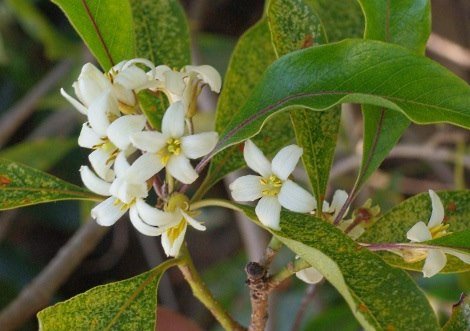
Alternative Name(s): Victorian box, Mock orange, Australian cheesewood, New Zealand daphne, Victorian laurel, Wild coffee
Known Hazards: This plant contains saponins. Saponins are found in many foods, such as some beans, and although they are fairly toxic to people they are poorly absorbed by the body and most pass straight through without any problem.
They are also broken down if the food is thoroughly cooked for a long time. Saponins are much more toxic to some creatures, such as fish, and hunting tribes have traditionally put large quantities of them in streams, lakes etc in order to stupefy or kill the fish.
source
magoo-2 found a series of multi accounts of a same owner is following your articles to cheat your generous rewards.
magoo-2 found these accounts are suspicious & can be multi accounts of a single owner. Conclusion is based on last 30 days transactions:
@saikr
@christian.danny
@aaeesha
@sarah.taylor
magoo-2
Check our latest multi comment spam update report
It's a very beautiful tree. Shared on twitter dear

magoo-2 found a series of multi accounts of a same owner is following your articles to cheat your generous rewards.
magoo-2 found these accounts are suspicious & can be multi accounts of a single owner. Conclusion is based on last 30 days transactions:
@moniristi
@shishiristi
@aflatunnisa
@hafez
@shihabieee
@mrashik
magoo-2
Check our latest multi comment spam update report
Sweet pittosporum (Pittosporum undulatum) has been widely cultivated as a garden ornamental in eastern and southern Australia.
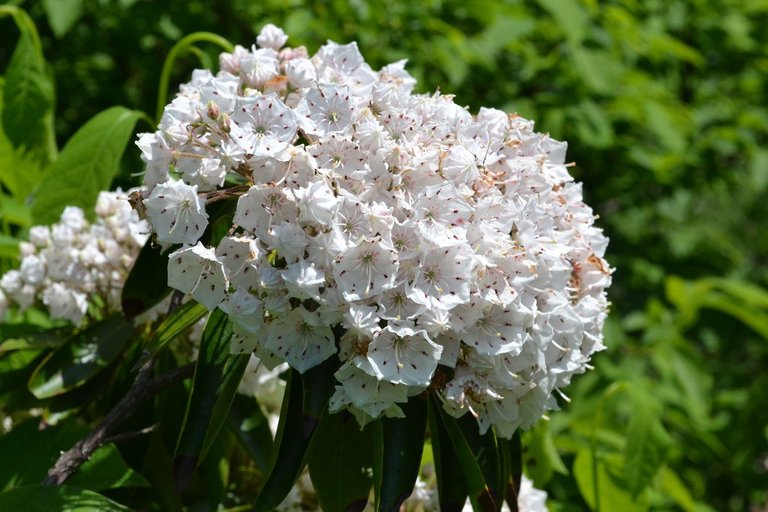
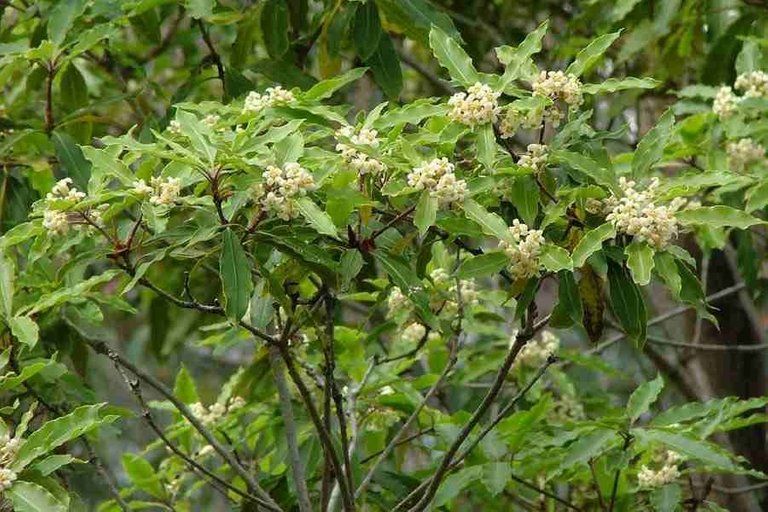
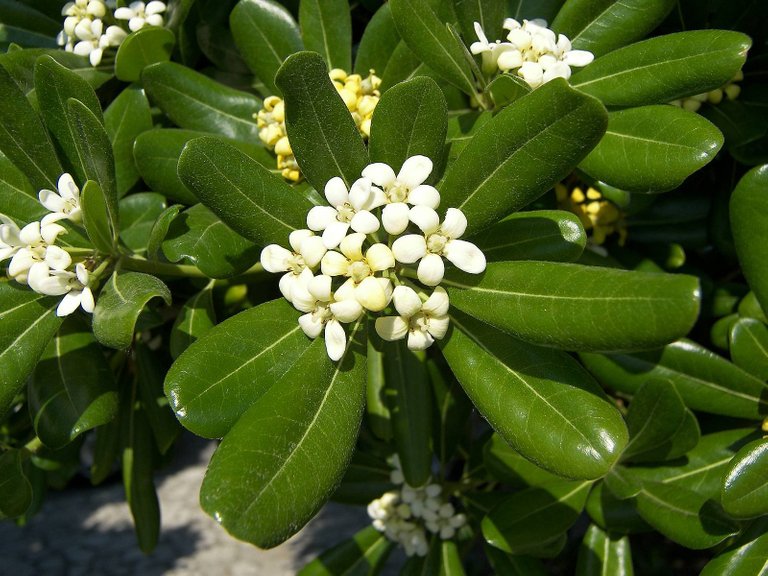
photo source
Widely naturalised naturalised beyond its native range in southern Australia (i.e. in south-western Western Australia, in Tasmania, in south-eastern South Australia and beyond its native range in Victoria). It is also naturalised on Lord Howe Island and Norfolk Island. It is also thought to have invaded habitats that it did not previously occupy within its native range in New South Wales.
photo source
photo source
Naturalised overseas in southern Europe (i.e. France, Spain and Portugal), southern Africa (i.e. South Africa), Saint Helena, India, China, New Zealand, south-western USA (i.e. California), Mexico, the Caribbean, South America (i.e. Colombia, Bolivia and Chile) and Hawaii.
source
magoo-2 found a series of multi accounts of a same owner is following your articles to cheat your generous rewards.
magoo-2 found these accounts are suspicious & can be multi accounts of a single owner. Conclusion is based on last 30 days transactions:
@alves
@devid1996
@mhyeasin
@sadikulaziz
@msena
@kilee
@ripon1
@googlefighter
@melianasagita
@ashasikder
@hichako
magoo-2
Check our latest multi comment spam update report
Awesome tree "Pittossporum". Sharp and long green leaves are amazing . Cream colors flowers are so pretty . This plant is very attractive for human and birds both . Thanks